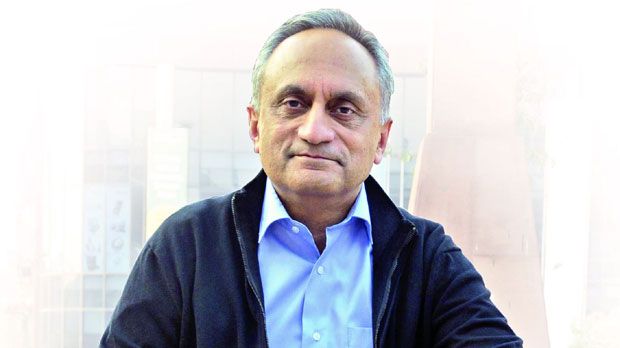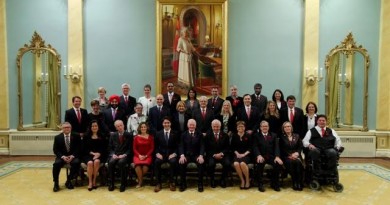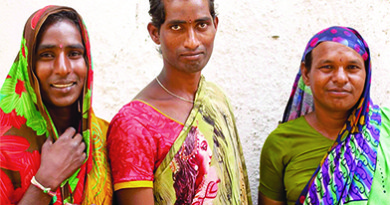Inventor, Saviour, Visionary or Philanthropist?
by Nalini Bhui
Passionate scientist, savvy businessman, lucky inventor or simply a crazy billionaire with a new hobby? Who is Manoj Bhargava? More importantly, can he really save the world?
Many are asking this of the little known, but recently much talked about billionaire with a passion for true philanthropy. Bhargava was born in Lucknow, India in 1953. He had a simple childhood, and immigrated to the US at the age of 14 years. While his father pursued a PhD, Manoj finished high school in Pennsylvania and being a math whiz, he attended one year at Princeton University. He worked at many jobs in construction, labour, cleaning, clerical accounting, taxi driving, printing press operation and business management. However, perhaps as a disillusioned young man, he moved back to India and lived as a monk in an ashram for twelve years. Whether it was identity seeking or soul searching, only he knows why.
What were humble beginnings soon turned into a ‘rags to riches’ story on his permanent return to the US in the 1990s. Manoj then took over his family’s plastics company, Prime PVC Inc., and gave it a new name: Prime Conduit. At that time, he, his wife, and their son resided in Farmington Hills, Michigan. An astute businessman, he grew the sales of Prime Conduit and sold the company for $20 million US dollars in 2007.
Soon after, he started the ‘Living Essentials’ brand. It was his invention, the ‘5-Hour Energy’ drink, that made Manoj Bhargava’s company worth four billion dollars. The popular drink was a simple blend of vitamins, nutrients, caffeine and amino acids packaged in a shot glass size bottle and sold for just $3 each. Thus, Manoj became the wealthiest Indian billionaire in the US. He maintained a low profile and was virtually unknown until he was awarded the ‘Wealthiest Indian & US Newsmaker of the year 2011’ and ‘Entrepreneur of Ernst and Young 2012’. Interviews and acclamations started pouring in. Being a well-grounded person, he continued his quiet lifestyle and started to pay more attention to his philanthropic work. As is usual in the corporate culture, demands for donations started to pour in from various sources. Realizing the magnitude of the amount he donated and the virtual lack of control for the usage of charity money, Manoj decided to fund his own ventures both in India and in the US. Despite his philosophy of simplicity, his charitable aspirations and donations became quite involved. As per his own statements, in his interviews, he said that he was actually working on donating more than ninety percent of his net profits.
Due to his personal history and not really believing in bookish University knowledge, he employed simple individuals from various fields such as those with hands- on experience in the auto industry & people who were ‘tinkerers.’ In general he preferred anyone that would nurture his philosophy. He tried to exemplify his belief that it was the duty of the wealthy to improve the life of the poor. Also, that each product should be simple and positively impact the maximum number of people possible. Even if it did not make money, it had to be incredibly useful to be on his list. He always looked only for those projects with a real use or ones with maximum impact. His projects were profitable business endeavors.
It was also his belief that there could be useful change in the world. Manoj’s motto was, “Make a difference in people’s lives, do not just talk about it.” His driving force was, “work is never done.” With this in mind, he dedicated one building called ‘Stage 2 Invention shop’ on his company property which had ten buildings on 25 acres. It is still believed to be the most well-funded ‘play house’ for engineers. Here, he liked his team to simplify any newly proposed project to be actually programmed and completed in one day. Unlimited resources were made available to support such inventions. Currently, several projects in the areas of water, energy and health are being actively pursued. The simplest and of most value is the invention of The Hybrid Bicycle which, when pedaled for one hour, produces’ pollution- and cost- free electricity for 24 hours. Power thus produced can be used to light up ten ‘100 – Watt light bulbs’ as well as charge cell phones, tablets and a small fan. During this process, as a bonus, the person pedaling gets physically fitter through a good workout. It is simple and doable and the machine is easily portable. Sounds miraculously simple and it is.
Next Manoj says that, just as oil was the gold of the previous fifty years, water will be the gold of the next fifty. He notes that a considerable population on earth has no access to clean, safe, quality drinking water, yet the oceans around have plenty of it. Places such as California, China, India, Africa & Arizona inspired the ‘drought rain project’. Unusable sea water is converted into drinking quality grade clean water in minutes. One thousand gallons of water are converted per minute by this very portable and efficient machine. Apparently at an 80% reduced cost compared to existing less portable machines. His suggestion is to place these units on barges a couple of miles off shore and to pipe the fresh water produced to the land nearby. According to his vision, a few thousand barges with several units on each one should alleviate most of the water problems around the world. The writer wonders how the barges would be powered. Perhaps groups of volunteers interested in the environment, sedentary politicians or individuals enrolled in community rehabilitation programs for crime prevention could be assigned round the clock on his Hybrid bicycles to produce enough electricity to power the barges. That would be pretty amazing indeed! Of course an easier option could be for his project to reduce diesel usage by 20%. What separates this from other desalination machines is also that the water so produced has agricultural uses as well making it very valuable in many parts of the world.
Finally, onto his third major current project in healthcare ‘Health Renew.’ Inspired by Sir David Lane who implied that many major health problems arise from the retaining of waste products produced by the body. This in turn affects circulation & creates and compounds health problems. So, Manoj’s machine the ECP (External Counter Pulsation) enhances circulation by squeezing blood from the legs back into the core body, acting just like an auxiliary heart. He actually uses this invention himself on a daily basis and declares that it is the secret to his good health. Surely there must be other factors adding to his good health fortune such as inheriting good genes! His recent documentary titled “Billions in Change” portrays one man’s journey in finding simple solutions as in his words,” talk doesn’t really help someone out of poverty. Awareness doesn’t reduce pollution; grow food or heal the sick that takes doing. Solutions are here.” He talks about energy being the great equalizer. If energy was plentiful the poor would not be poor he observes. Also, that lack of electricity has denied the poor the benefits of the Industrial Revolution a real shame. It is the duty of those who have to provide for basic resources to be accessible to all the underprivileged. He states that people are impressed by companies that spend 3% of their wealth on research. But, he argues, “it is not mobs of PhDs that come up with great inventions – a couple of guys in a garage have proved that that’s not true.” So, asks the writer Nalini Bhui, is Manoj Bhargava truly the savior or a crazy billionaire with a hobby? TIME WILL SURELY BE THE JUDGE.




